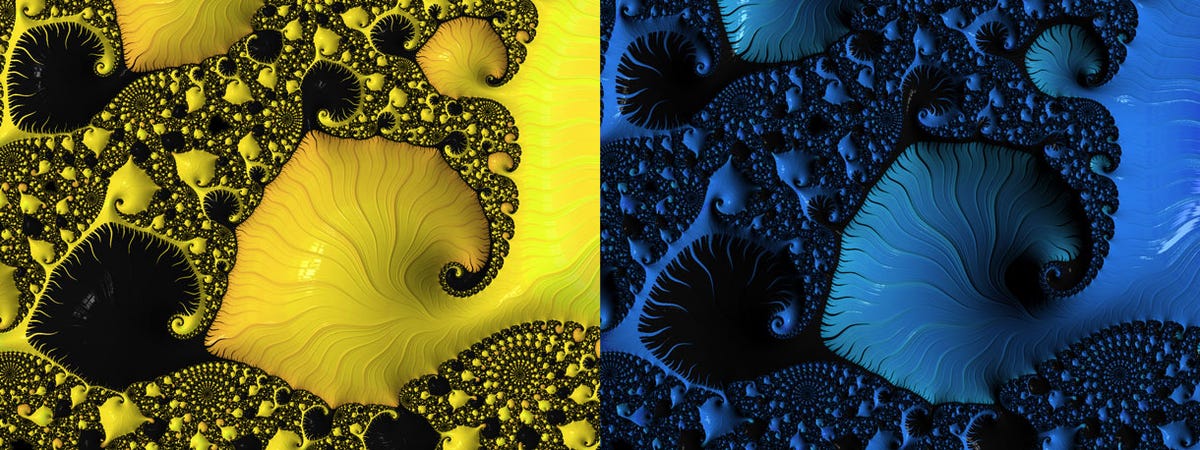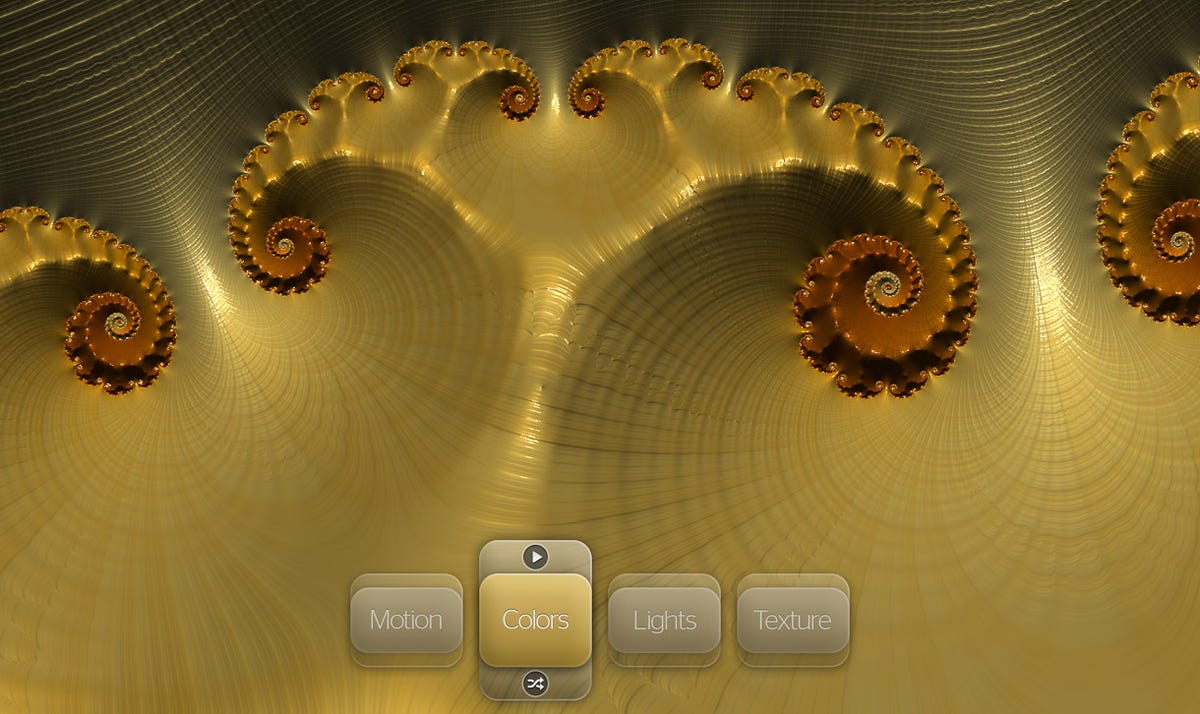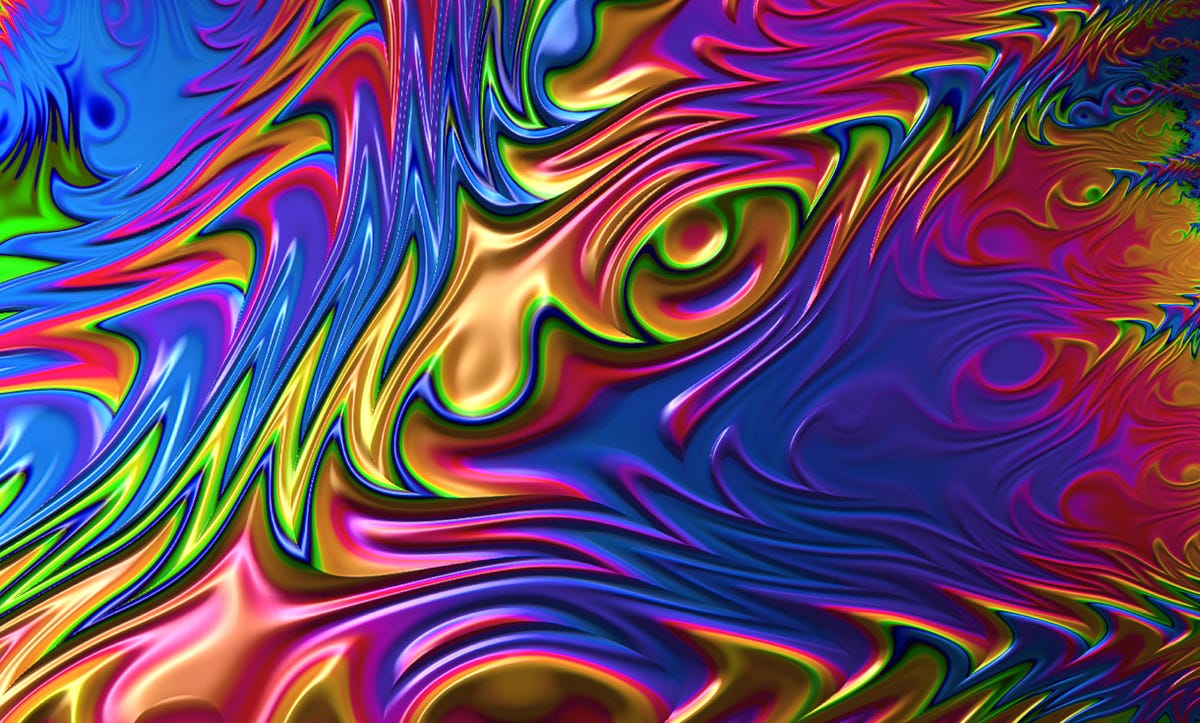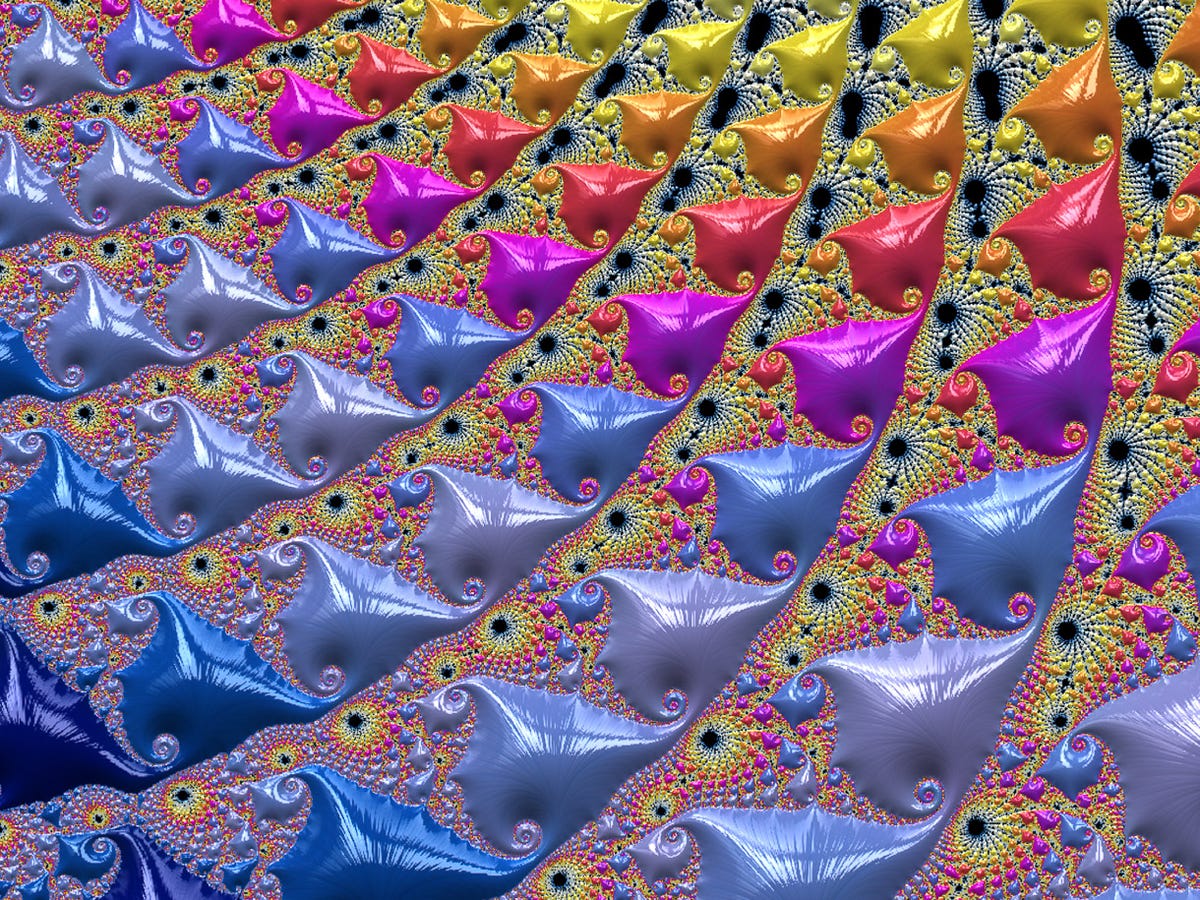In 1983, intrigued by an article on fractals, I wrote a program to display the Mandelbrot set on my family’s TRS-80 Color Computer. It had a maximum screen resolution of 256×192 when plugged into our TV, had 16KB of memory after we soldered on new memory chips, and ground through the calculations so slowly that I had to wait for each pixel to show.
My, how times have changed.
On Wednesday, some computer graphics veterans released a new fractal exploration app called Frax for iOS devices. It brings a physical exploration style not just to panning and zooming, but to picking colors and textures, and it comes with a bunch of useful presets to get you started.
The creators — Ben Weiss, Kai Krause, and Tom Beddard — all worked together in the 1990s on Kai’s Power Tools, a plug-in that brought novel computer graphics effects to Adobe Photoshop along with controls that departed radically from the rectangular dialog boxes of the era. Clearly their appreciation for user-interface design and the beauty of computer-generated graphics has stayed with them in their new venture, Iter9 (think “iterate,” but more).
Fractals are mathematical sets in which large-scale features also appear at smaller and smaller scales. They’re common in nature, for example with networks of veins that keep branching into smaller veins, or coastlines that are jagged whether measured on a scale of a thousand miles or one mile. Computers are fast enough at calculating that they can turn fractal equations like the Mandelbrot set into works of fractal art.


Stephen Shankland/CNET
For someone like me, who loves the quasi-organic mathematical patterns of the Mandelbrot set and Julia set fractals, Frax is great. The colors and textures put every pixel on my third-generation iPad to use. The physical controls, though overly twitchy in my opinion, make exploration a pleasure.
Frax comes in two basic editions, $2 for the iPhone version and $4 for the Frax HD version for iPads. An in-app upgrade to Frax Pro — $5 for iPhone users and $7 for iPad users — includes a much broader range of controls, new presets for exploration and effects, and the ability to generate glorious 50-megapixel fractal images with the Frax Cloud service.
Frax won’t satisfy the Infinity Blade or Fruit Ninja gamers, but for a certain crowd — the kinds of folks who like M.C. Escher engravings and Yes album covers — it’s very entrancing.


Stephen Shankland/CNET
The math gives the iPad’s processor and graphics chip a workout. You can zoom and pan relatively rapidly with a lower-resolution look, but changing textures can mean a two-minute wait before the image is fully rendered. You get a fairly detailed idea in just a few seconds, though. And paying the penalty for the textures is worth it, because it brings life to the otherwise relatively uniform regions of a fractal image.
Once you have a fully detailed image, you can fiddle with color settings very rapidly, since those don’t change the underlying calculation. With a few taps, you can change a creation’s look from engraved copper to iridescent insect carapace to psychedelic paisley to demonic fantasy.
Then you can animate the color cycling with a slide of the finger — my favorite part is watching a tidal surge of yellow sweep through a black spiral. Unfortunately, you can’t record videos of these animations.
Of course, you’ve got the usual sharing if you want others to see your work, too, and Frax Pro users can publish their finds on their Frax gallery page.


Stephen Shankland/CNET
You can also traverse the fractal landscape with a swipe to pan and a pinch to zoom. Zooming has its limits because of the math, though, as the company states:
The cost of calculating the deep regions will grow exponentially and thus the time it takes…
Images can be found of ultra deep zooms on the Web everywhere, but upon closer examination they took hours, or in some cases weeks with powerful desktop machines. We want to do it up to 60 times a second.
Frax has another money-making idea besides the Pro version. It also will render high-resolution versions of your fractal finds for a fee. A 2,048×1,536 3.1-megapixel rendering costs a credit, a 4,096×3,072 12.6-megapixel image costs 4 credits, and a 8,192×6,144 50-megapixel image — available only with the Pro version — costs 8 credits. Credits cost $1 for 20, $3 for 80, or $6 for 240. If you’ve got a Retina iPad, just taking a screenshot will get you a very nice 3.1-megapixel image, but Frax says its render farm of servers “really crank up the quality and resolution, which just isn’t feasible on the iPhone or iPad.”
The company might bring the software to other operating systems: “At the moment we are focusing iOS, but we may consider other platforms based on demand,” the company said in an FAQ. “As for the desktop, we developed various OS X prototype apps to help during the development of Frax and are considering various options to make a user-friendly version.”
As evidenced by posts by Beddard and Krause that delve into the nature of fractals, creating Frax was clearly a labor of love. I for one am delighted they made it.


Stephen Shankland/CNET



